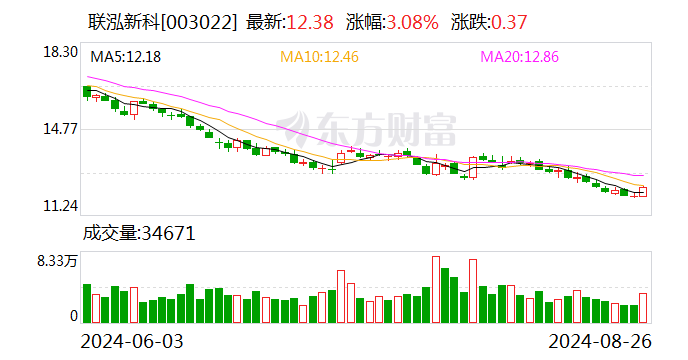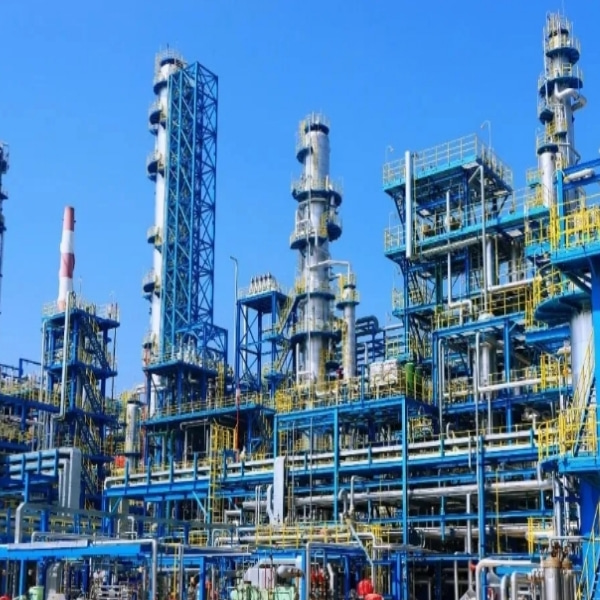From an EVA particle, see the road of China's new material innovation and breakthrough.
by Admin,
Sep 02th,2024

“One by one, EVA particles may seem insignificant, but in fact, they are the crystallization of China's new material industry innovation.” Zheng Yueming, chairman of Levima Advanced Materials Corporation Limited (12.950, 0.03, 0.23%), told the China Securities Journal reporter while holding a bottle of slightly transparent white granules.
EVA has become one of the unsung heroes behind the rise of China's photovoltaic industry. Levima Advanced Materials Corporation Limited has broken the long-term technical monopoly of foreign countries and took the lead in developing EVA photovoltaic film materials in China, promoting import substitution, filling market gaps, and helping the vigorous development of China's photovoltaic industry. It has also become an epitome of China's new material industry's innovation and breakthrough.
At the construction site of the Lianhong Gerun integrated project in Tengzhou City, Shandong Province, Xie Yaping, senior vice president of Levima Advanced Materials Corporation Limited and the chief commander of the project construction headquarters, told the China Securities Journal reporter, “The 200,000-ton/year EVA device is under construction. What we see now is the overall steel structure. This project is expected to be capped in October this year.”
Breaking international monopoly
EVA, scientifically known as ethylene-vinyl acetate copolymer, is an advanced polymer material. With the rapid development of the photovoltaic industry, EVA photovoltaic film materials are widely used. At present, photovoltaic film is the largest downstream application field of EVA, accounting for 54.6%. At the same time, the demand for EVA in application fields such as wires and cables, foaming, and hot melt adhesives remains steadily growing.
As a key photovoltaic material, the production technology and process of EVA have long been monopolized by international giants such as STR (USA), Mitsui Chemicals (Japan), Bridgestone (Japan), and Etimex (Germany). Before 2020, the import dependence remained above 60%.
Levima Advanced Materials Corporation Limited developed EVA photovoltaic film materials in China for the first time at the end of 2015 through painstaking research and development, greatly reducing costs and promoting the rapid development of China's photovoltaic industry. At present, Chinese new material enterprises represented by Levima Advanced Materials Corporation Limited have occupied the vast majority of the global photovoltaic film material market share.
“When we launched the EVA project, the domestic demand was more than 200,000 tons, but the production capacity was only several tens of thousands of tons. We believed that the new energy industry represented by photovoltaic had great prospects, and we could achieve a lot in the EVA photovoltaic film material market.” Zheng Yueming told the China Securities Journal reporter. The correct strategy and strong research and development strength have enabled the company to seize the opportunity of the rapid development of the photovoltaic industry in the past few years.
Levima Advanced Materials Corporation Limited adopts a combination of independent research and development and cooperative development. It has a high-level research and development team, has established a leading domestic advanced polymer material research and development platform and a special fine material synthesis and application platform, and has built a bioengineering platform and a new battery material research and development and application platform. It has mastered a number of core technologies and owns a number of technological achievements with international and domestic leading levels. Levima Advanced Materials Corporation Limited has become an epitome of Chinese new material enterprises realizing transformation and upgrading through research and development innovation.
After years of development, the overall self-sufficiency rate of China's chemical new material industry has reached 61%, and the industrial scale has exceeded one trillion yuan. It is expected that by 2028, China's chemical new material production capacity will reach 50 million tons/year, and a number of technologies and products with international competitiveness will be formed.
Zheng Yueming said, “We should clearly recognize that at present, there are still problems in the domestic new material industry such as serious homogenization, overcapacity in medium and low-end products, and insufficient high-end production capacity. Developed countries and regions such as the United States, Europe, and Japan are still in the first echelon of the global chemical new material industry, with obvious advantages in high-end materials. The varieties and properties of China's chemical new materials still cannot fully meet the needs of high-end markets. There is still a certain gap compared with the international advanced level in new material development, especially in high-end new material research and development and application.”
Building high-end production capacity
While strengthening technological innovation and breakthroughs, accelerating the construction of high-end production capacity, promoting product structure optimization, and meeting market demand have become the top priorities for the current development of China's new material industry. Levima Advanced Materials Corporation Limited is making efforts in this regard.
Driving in the Lunan High-tech Chemical Park in Tengzhou City, Shandong Province, one after another tall chemical facilities come into view. At the construction site of the Lianhong Gerun new energy materials and biodegradable materials integrated project, tower cranes are operating in an orderly manner, and engineering vehicles are shuttling back and forth.
It is reported that the Lianhong Gerun integrated project has a total investment of 12.5 billion yuan and has been included in major projects in Shandong Province. It includes a 200,000-ton/year EVA photovoltaic film material device, a 300,000-ton/year propylene oxide (PO) device, a 50,000-ton/year polypropylene carbonate (PPC) biodegradable material device, etc. “This integrated project will be completed and put into production in 2025. The 20,000-ton/year ultra-high molecular weight polyethylene (UHMWPE) and 90,000-ton/year vinyl acetate (VA) combined device, and the 100,000-ton/year lithium battery solvent-carbonate combined device located in the same park have all been completed and put into production.” Xie Yaping introduced to the reporter at the project site.
It is worth mentioning that the company's existing EVA device adopts kettle process technology, with a production capacity of more than 150,000 tons/year. The 200,000-ton/year EVA device under construction adopts tubular process technology. After the new production capacity is put into production, the company's EVA production capacity will exceed 350,000 tons/year, which is conducive to improving production operation flexibility and flexibly arranging product structure.
“The Lianhong Gerun integrated project currently under construction has the largest investment and the most devices among our ongoing projects.” Xie Yaping told the reporter, “The company is carrying out a new round of industrial investment in accordance with the established strategy, using independently developed or cooperatively developed green new technologies to build a number of high-end projects such as new energy photovoltaic materials, new energy battery materials, biodegradable and bio-based materials, semiconductor electronic materials, and special materials.”
With the successive commissioning of the above projects, the core competitiveness of Levima Advanced Materials Corporation Limited will be significantly enhanced, and it is expected to achieve better performance.
POE is the second largest category of photovoltaic film raw materials. According to different application needs and scenarios, it forms an effective complement with EVA in the photovoltaic film material supply pattern. POE photovoltaic films have unique advantages in aspects such as anti-PID, aging resistance, and water resistance, and are mainly used in the packaging of new photovoltaic cells such as N-type batteries and BC batteries.
In the product exhibition hall of Levima Advanced Materials Corporation Limited, Zheng Yueming told the reporter that while consolidating the competitive advantage of EVA products, the company is actively deploying POE business. “The planned 300,000-ton/year POE project will adopt a full set of independently developed process technologies to produce a series of high-end products such as POE photovoltaic film materials and toughening materials. The first phase of the 100,000-ton/year POE project is expected to be completed and put into production in 2025.”
Opening up growth space
As an important foundation supporting the development of modern manufacturing, the research and development level and industrialization scale of new materials have become important indicators for measuring a country's economic and social development and scientific and technological progress.
Leave a comment
Contact us now
"Details casts quality ,honesty wins the future !" Weare highly welcome to yourinquiry and visit, contact usnow ,u will meet the rightperson~!
CALL TO ACTION 中文
中文
